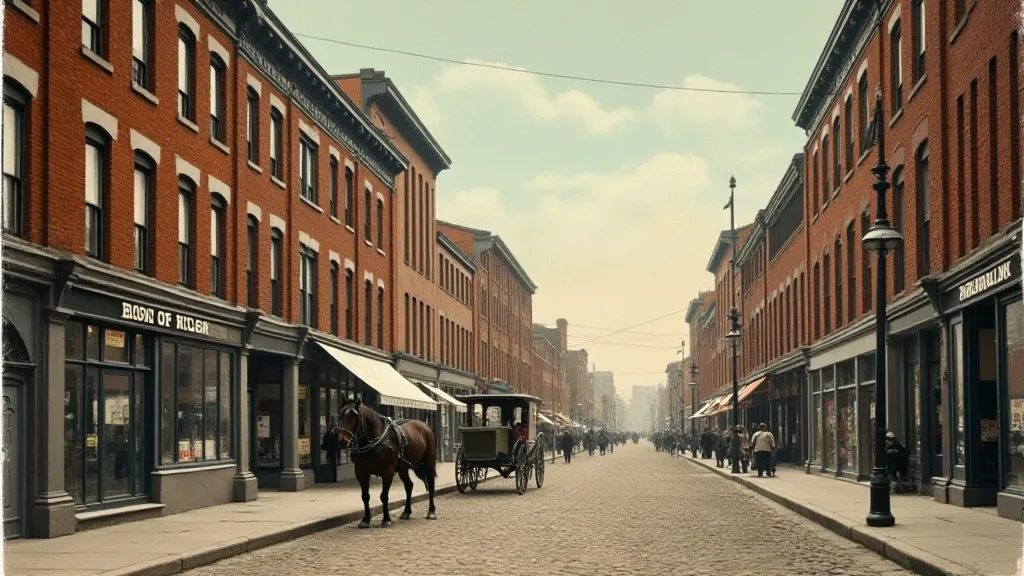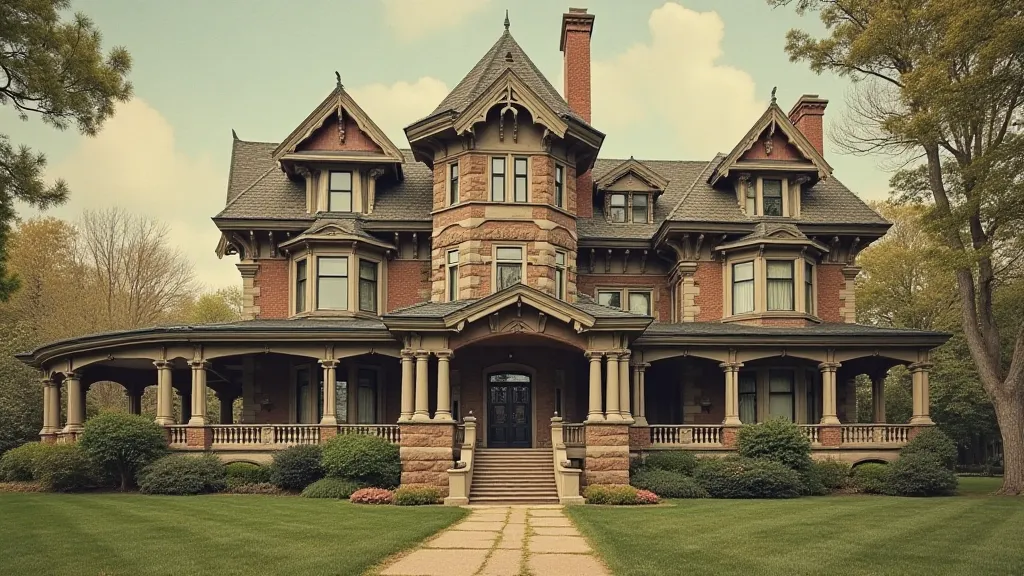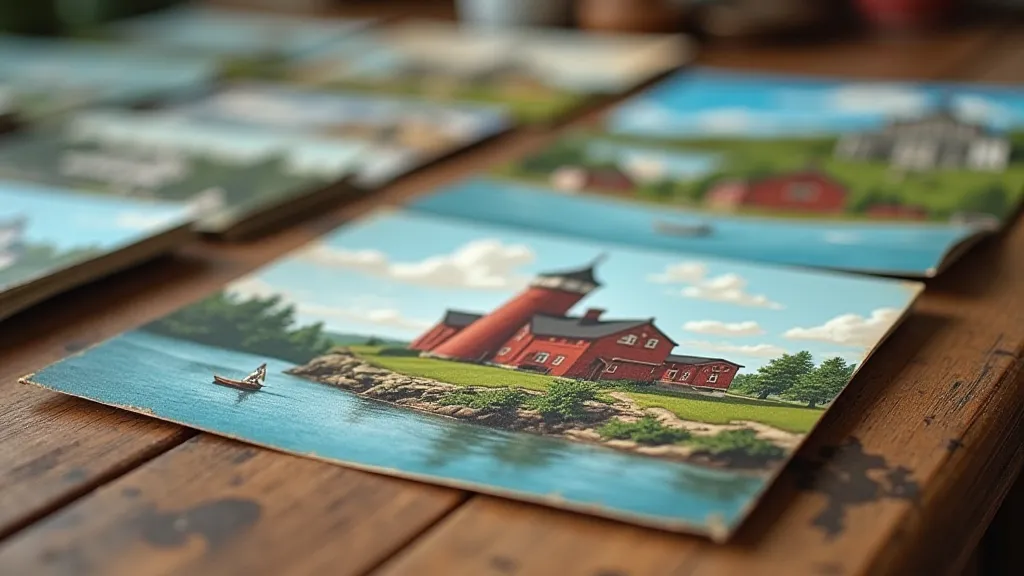The Cobblestone Chronicle: Maine Postcards and the Architecture of a Past Life
There's a peculiar magic held within a vintage postcard. It’s not just the faded ink or the slightly yellowed paper; it’s the glimpse it offers – a fleeting moment frozen in time, a visual echo from a world subtly, yet profoundly, different. For those of us fascinated by Maine’s history, these small rectangular windows into the past are invaluable, offering a tangible connection to the people, places, and, crucially, the architecture that shaped our state. They’re more than just pretty pictures; they's whispers of lives lived, ambitions realized, and the enduring character of a landscape defined by its stone and its sea.
I remember finding my first collection of Maine postcards at a dusty antique shop in Camden. The air was thick with the scent of old paper and forgotten memories. I wasn't a serious collector then, just a curious visitor, but the images captivated me. Buildings I recognized, now altered or gone entirely, stood proud and unyielding in their photographic prime. It was like peering into a parallel reality, one where time moved at a different pace, and the buildings themselves seemed to possess a silent, enduring wisdom.
Maine's Architectural Heritage: A Postcard Portrait
Maine's architecture is a reflection of its history: a tapestry woven from the practical necessities of a maritime economy and the aspirations of a people forging a life in a challenging environment. Early settlements were dictated by the land; coastal communities relied on sturdy, often vernacular, structures built to withstand the relentless Atlantic winds. Inland, farmhouses and mills spoke of hard work and self-sufficiency. The Victorian era, with its influx of prosperity and new building techniques, brought ornate details and grander designs, while the Arts and Crafts movement, responding to industrialization, championed handcrafted elements and a return to simpler forms. Understanding this intricate web requires appreciating not just the structures themselves, but also the evolving ways they were viewed and represented – particularly through the lens of the burgeoning tourism industry and the early days of postcard production.
Vintage postcards excel at capturing these diverse architectural styles. Look at a postcard from the early 1900s depicting Portland's Old Port. The buildings, often brick or granite, are tightly packed, their facades adorned with intricate cornices and projecting storefronts. Notice the cobblestone streets, the gas lamps, the horse-drawn carriages – a bustling scene rendered in a moment of photographic clarity. Compare that to a later postcard showcasing a stately Victorian mansion in Bar Harbor, its turret and veranda testament to a burgeoning tourism industry and a desire for refined leisure. The way these images were marketed and consumed also shaped perceptions of Maine itself, contributing to a carefully constructed image aimed at attracting visitors.

The Craftsmanship Behind the Image
What’s often overlooked is the craftsmanship behind both the buildings themselves and the photographic process that immortalized them. The stonemasons who painstakingly cut and fitted the granite blocks for the Portland City Hall, the carpenters who built the intricate woodwork of a farmhouse in Kennebunkport, the bricklayers who raised the chimneys of countless homes – their skill and dedication are imprinted on every structure. These were not mass-produced commodities; they were the product of human labor, ingenuity, and pride. The evolution of these building techniques, and the changing aesthetic preferences of the time, are fascinating threads to explore, especially when considering how they were captured and disseminated through the emerging medium of the postcard.
And then there's the photographer. Early postcard photography wasn't a simple point-and-shoot affair. Photographers often had to haul heavy equipment, navigate challenging terrain, and contend with unpredictable weather. Many used glass plate negatives, a delicate and technically demanding process. The resulting images, while often possessing a certain charming imperfection – a slight blur, a crooked horizon – are testaments to their perseverance and artistic vision. They were capturing a moment not just for posterity, but often to showcase their town or region, acting as visual ambassadors for their communities. The careful selection of what to photograph, and the artistic choices made in capturing the image, reveal much about the values and aspirations of the era. Sometimes, it feels as though you can almost hear the shutter clicking, preserving a moment in time and contributing to a growing collection of visual representations of Maine.
A Sense of Loss and Preservation
Perhaps the most poignant aspect of collecting Maine postcards is the sense of loss that accompanies them. Many of the buildings depicted no longer exist, victims of fire, demolition, or the relentless march of progress. A postcard showing the elegant Grand Hotel in Rockland, for example, offers a bittersweet reminder of a bygone era of luxury and resort life, as the hotel itself was destroyed by fire in 1915. Others have been altered beyond recognition, their original facades obscured by modern additions or renovations. The selective nature of what was preserved on postcards further contributes to this feeling – a visual record of what was deemed worthy of remembrance.
This sense of loss, however, is also intertwined with a powerful urge to preserve. The simple act of collecting and studying these postcards feels like a form of historical activism, a way of keeping the memory of these places alive. It fosters an appreciation for the architectural heritage of Maine and encourages us to protect the buildings that still remain. Many collectors become amateur historians, researching the history of the buildings shown on their postcards, piecing together stories of the people who lived and worked within them. These visual fragments contribute to a larger narrative, reminding us of the importance of recognizing the significance of place and the stories that reside within its built environment.

The Evolving Image: Tourism and Perception
The postcards themselves, beyond their photographic content, are artifacts of a specific era. The printing techniques, the fonts used, the very paper stock – all speak to the time in which they were produced. Examining these details reveals much about the evolving relationship between Maine, its people, and the growing tourism industry. The curated image presented on these cards helped shape perceptions of the state, and understanding that process is key to appreciating their historical significance. The way Maine was presented – often romanticized and idealized – contributed to a carefully constructed narrative aimed at attracting visitors. This notion of a carefully constructed image ties into how these postcards shaped perceptions, as explored in further detail in “The Tourist's Gaze: Postcard Views and the Construction of Maine's Image.”
Restoration and Collecting: A Delicate Balance
For those interested in collecting vintage Maine postcards, there are a few things to keep in mind. Condition is paramount. Postcards in excellent condition, with vibrant colors and minimal wear, are generally more valuable. However, even postcards with significant wear can be treasured for their historical significance. There’s a certain charm in the faded ink and the dog-eared corners, a tangible reminder of their journey through time. The colors, often delicate and prone to fading, are particularly vulnerable, and understanding the chemistry behind early colorization processes reveals much about their fragility. This vulnerability is further illuminated in “Sun-Drenched Fragments: The Vulnerability of Color in Aging Maine Postcards.”
Restoration, when attempted, should be done with caution. Aggressive cleaning or restoration can damage the postcard and diminish its value. Sometimes, leaving a postcard as it is – with its imperfections and its history – is the best approach. The goal’s not to make it look like new, but to preserve its authenticity.
More importantly, engage with the stories behind the images. Research the buildings, the photographers, the communities they represent. These postcards are not just pieces of paper; they’re windows into the past, offering glimpses into the lives of those who came before us. They’re invitations to explore the rich and complex history of Maine – one building, one photograph, one postcard at a time. The images often represent a carefully selected view, contributing to a broader sense of community identity and shared experience, as explored in “A Patchwork of Pines: Maine Postcards as Reflections of Community Identity.”

The enduring appeal of vintage Maine postcards lies not just in their aesthetic beauty, but in their ability to connect us to a past that is both familiar and distant. They’re a reminder of the enduring power of place and the importance of preserving our architectural heritage – a chronicle etched in paper and ink, waiting to be rediscovered and cherished.





